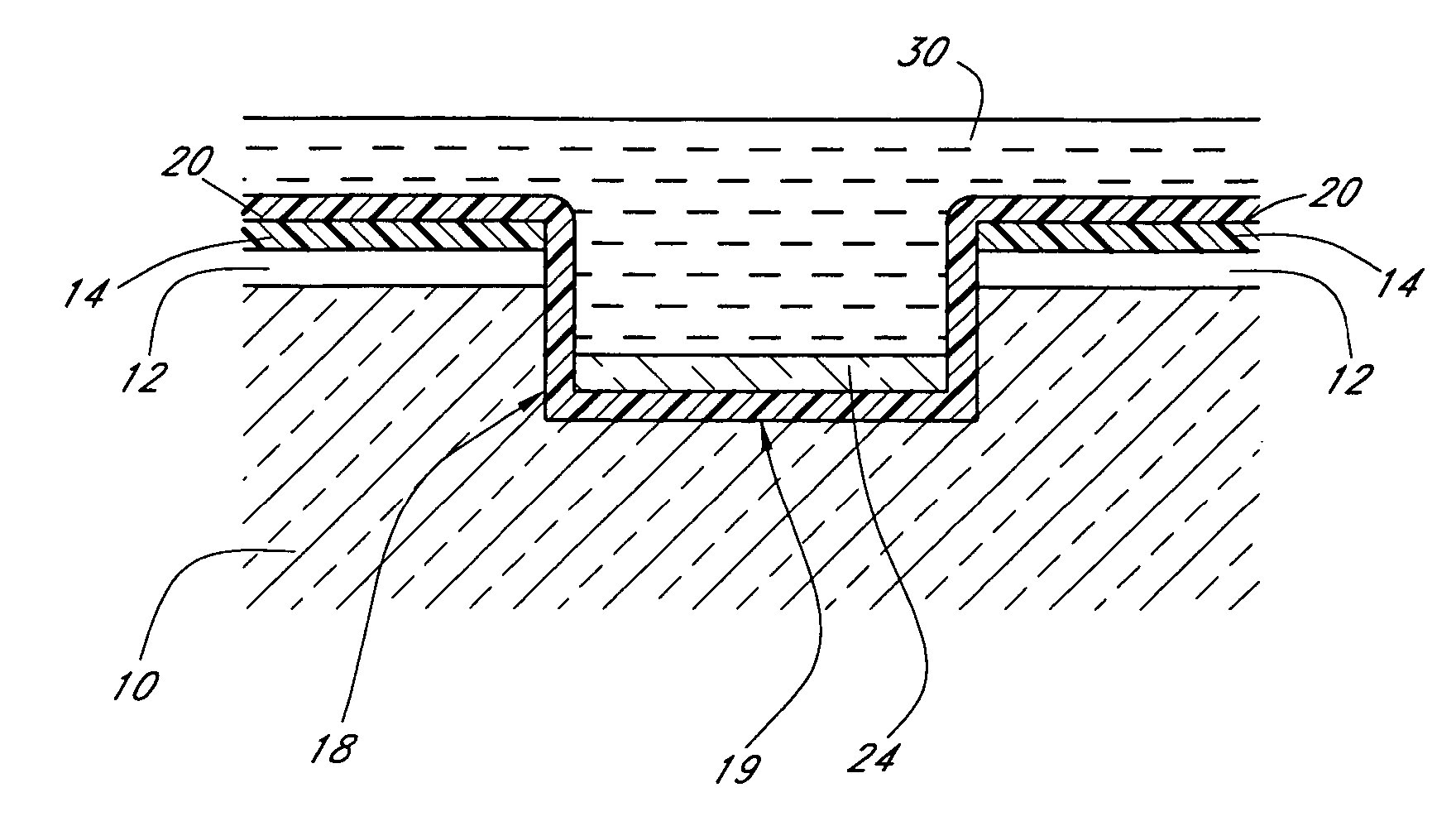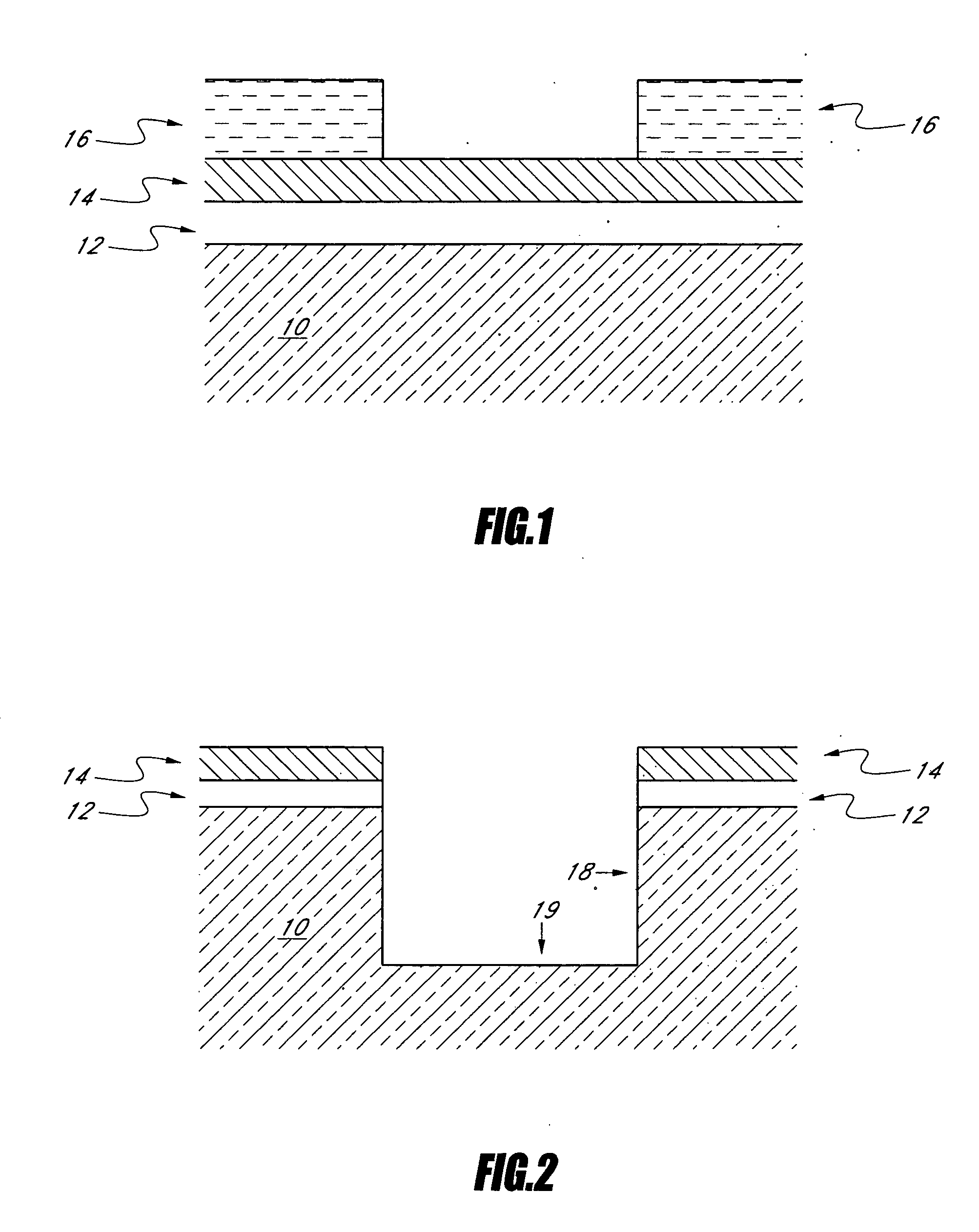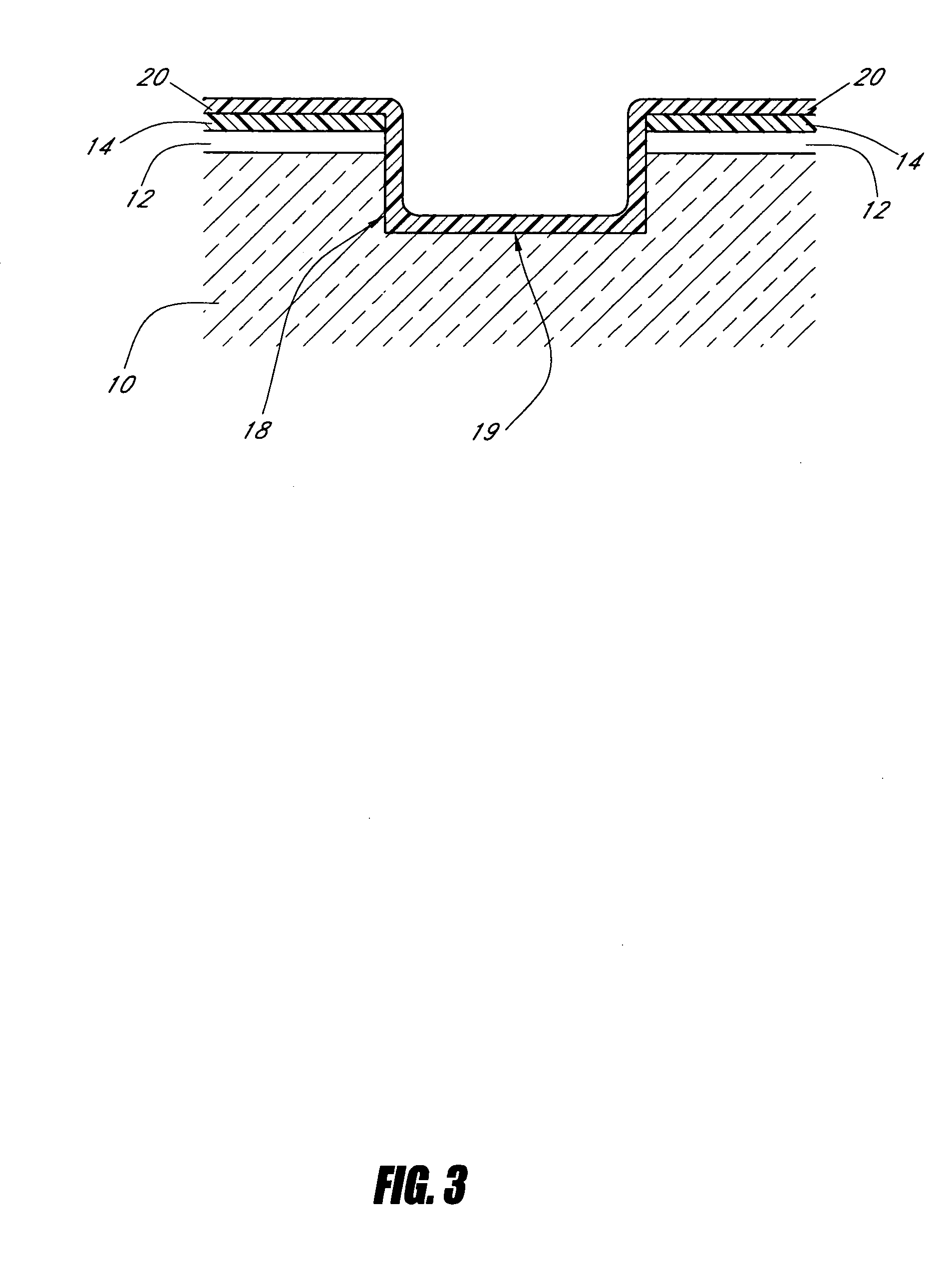Trench insulation structures and methods
a technology of trench insulation and trench walls, applied in the direction of electrical equipment, semiconductor devices, semiconductor/solid-state device details, etc., can solve the problems of trench walls being damaged, wet etch rate gradients, poor rebonding, etc., to improve the density of a spin-on dielectric
- Summary
- Abstract
- Description
- Claims
- Application Information
AI Technical Summary
Benefits of technology
Problems solved by technology
Method used
Image
Examples
Embodiment Construction
[0025] It has been found that the undesirable etch rate gradients can be attributed to the volume shrinkage of insulation materials in trenches and the associated weak crystal structure. Normal shrinkage of spin-on deposition (SOD) dielectric materials is believed to cause increased tensile bond stress and a weakened interface between densified SOD dielectrics and trench walls.
[0026] Thus, the inventors have found it desirable to anisotropically treat the base of the trench. In one embodiment, a silicon rich base layer is deposited over the base of the trench. In another embodiment, an insulating liner layer is treated using an anisotropic plasma process which produces a thin silicon rich portion of the liner layer. In either of the above embodiments, the silicon rich layer will expand upon densification of the spin-on deposition material and at least partially compensate for the volume shrinkage of the SOD material.
[0027] In a preferred embodiment, described in more detail below,...
PUM
| Property | Measurement | Unit |
|---|---|---|
| power | aaaaa | aaaaa |
| power | aaaaa | aaaaa |
| power | aaaaa | aaaaa |
Abstract
Description
Claims
Application Information
 Login to View More
Login to View More - R&D
- Intellectual Property
- Life Sciences
- Materials
- Tech Scout
- Unparalleled Data Quality
- Higher Quality Content
- 60% Fewer Hallucinations
Browse by: Latest US Patents, China's latest patents, Technical Efficacy Thesaurus, Application Domain, Technology Topic, Popular Technical Reports.
© 2025 PatSnap. All rights reserved.Legal|Privacy policy|Modern Slavery Act Transparency Statement|Sitemap|About US| Contact US: help@patsnap.com



